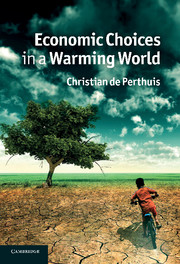Book contents
- Frontmatter
- Contents
- Acknowledgements
- Introduction
- 1 Climate risk
- 2 Some like it hot: adaptation to climate change
- 3 Building a low-carbon energy future
- 4 Pricing carbon: the economics of cap-and-trade
- 5 Intensifying agriculture to safeguard forests
- 6 The price of carbon: the economics of projects
- 7 Macroeconomic impacts: sharing carbon rent
- 8 International climate negotiations
- Conclusion
- References
- Appendix 1 Thirty key readings
- Appendix 2 Thirty key sets of figures
- Appendix 3 Greenhouse gas emissions around the world
- Glossary
- Index
4 - Pricing carbon: the economics of cap-and-trade
Published online by Cambridge University Press: 05 June 2012
- Frontmatter
- Contents
- Acknowledgements
- Introduction
- 1 Climate risk
- 2 Some like it hot: adaptation to climate change
- 3 Building a low-carbon energy future
- 4 Pricing carbon: the economics of cap-and-trade
- 5 Intensifying agriculture to safeguard forests
- 6 The price of carbon: the economics of projects
- 7 Macroeconomic impacts: sharing carbon rent
- 8 International climate negotiations
- Conclusion
- References
- Appendix 1 Thirty key readings
- Appendix 2 Thirty key sets of figures
- Appendix 3 Greenhouse gas emissions around the world
- Glossary
- Index
Summary
Lodz Province, Poland. The town of Kleszczow has a little over 3,000 inhabitants, most of them farmers and retired people. It is part of the district of Belchatow, in the historical industry centre of Poland. Kleszczow is home to the largest coal-fired power station in Europe, its two main chimneys each as high as the Eiffel Tower creating a landmark that can be seen from a great distance on clear days. Every year Belchatow power station generates a fifth of Poland's electricity from its twelve generating units. It is owned by Polska Grupa Energetyczna (PGE), a company which also owns two lignite mines – lignite being the most carbon-emitting coal. This vertical integration ensures the plant's supplies. Belchatow also emits more carbon dioxide (CO2) than any other installation in Europe, around 30 million tonnes a year, or a third of the total emission of countries such as Portugal or Colombia.
Yorkshire, UK. Drax lies six miles south of Selby, famed for its Benedictine Abbey dating from 1069. The village had only 382 inhabitants at the last census. Since the closing of the village shop in 2007, which also served as the local sub-post office, the Huntsmans Arms pub is the only remaining business. Yet Drax is the site of the largest coal-fired power station in the UK. Its six generating units, with a total capacity of 4,000 megawatts (MW), supply 7 per cent of the country's electricity. The power station can process 36,000 tonnes of coal a day.
- Type
- Chapter
- Information
- Economic Choices in a Warming World , pp. 88 - 116Publisher: Cambridge University PressPrint publication year: 2011



